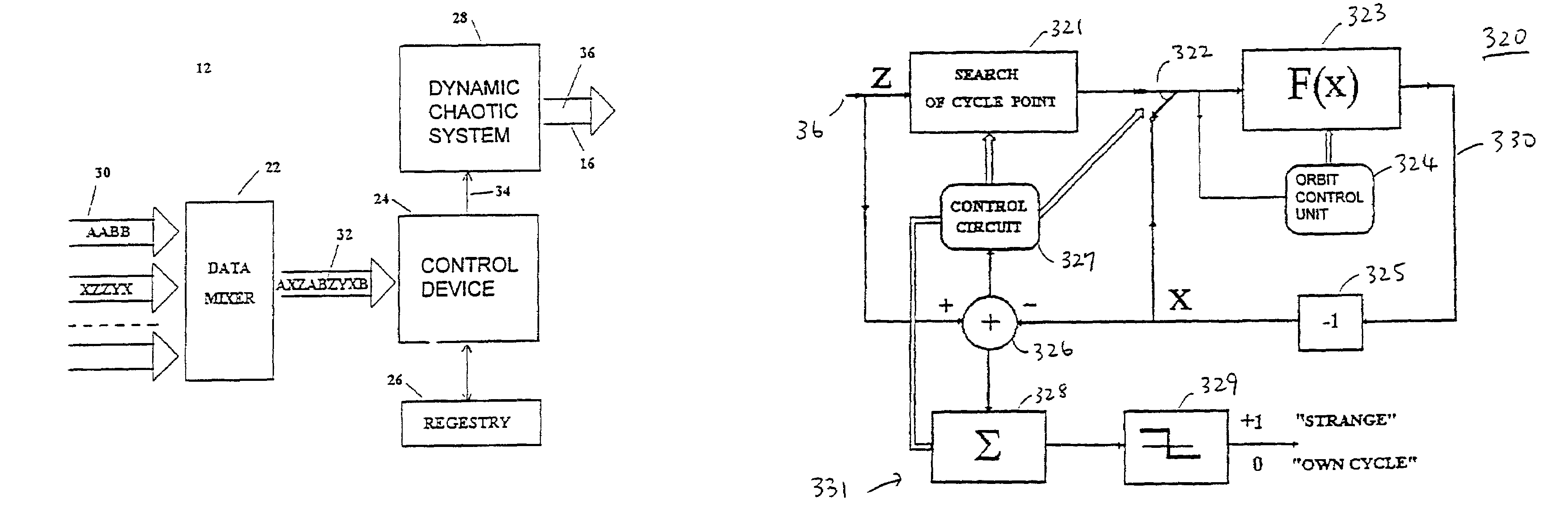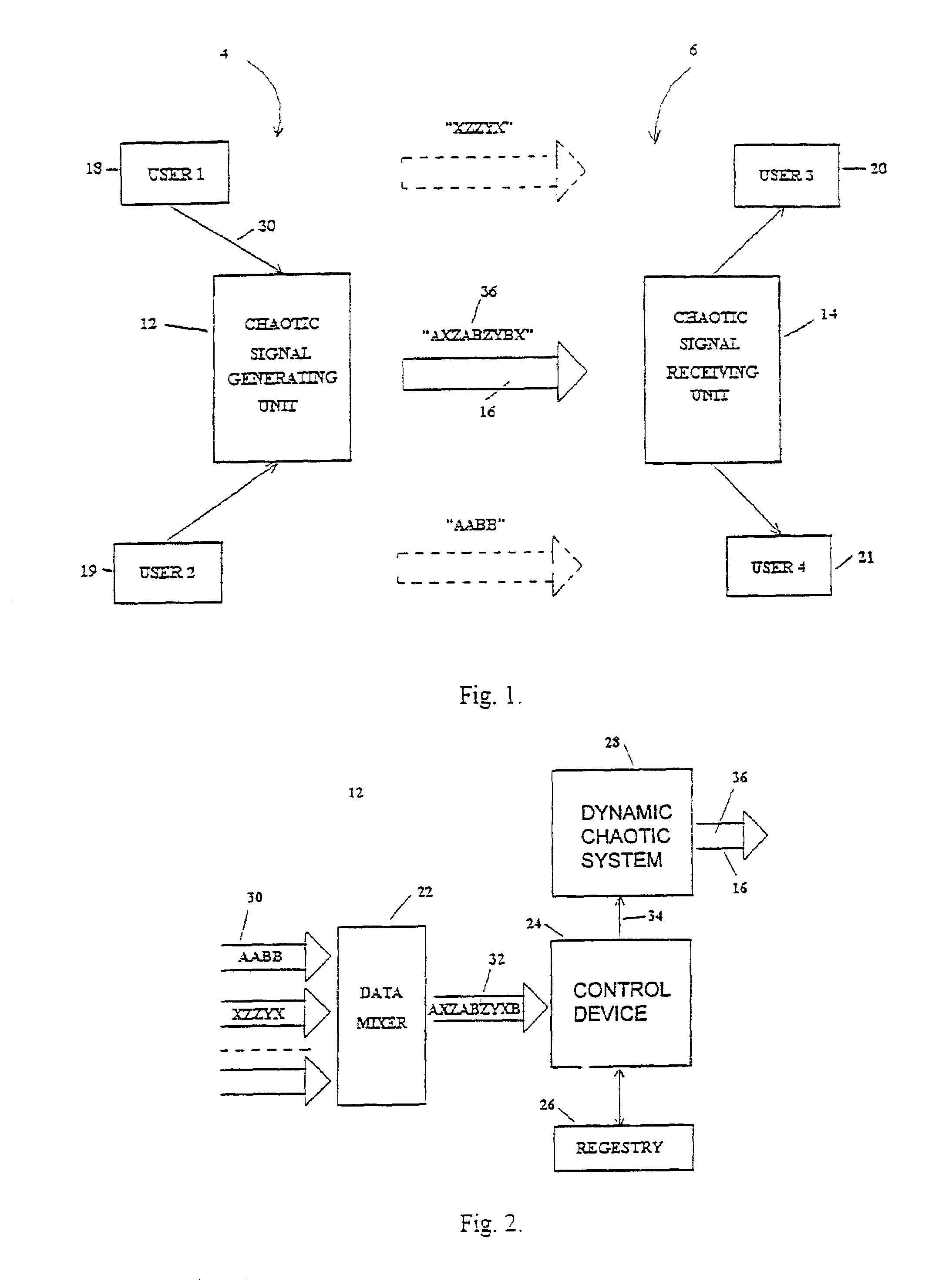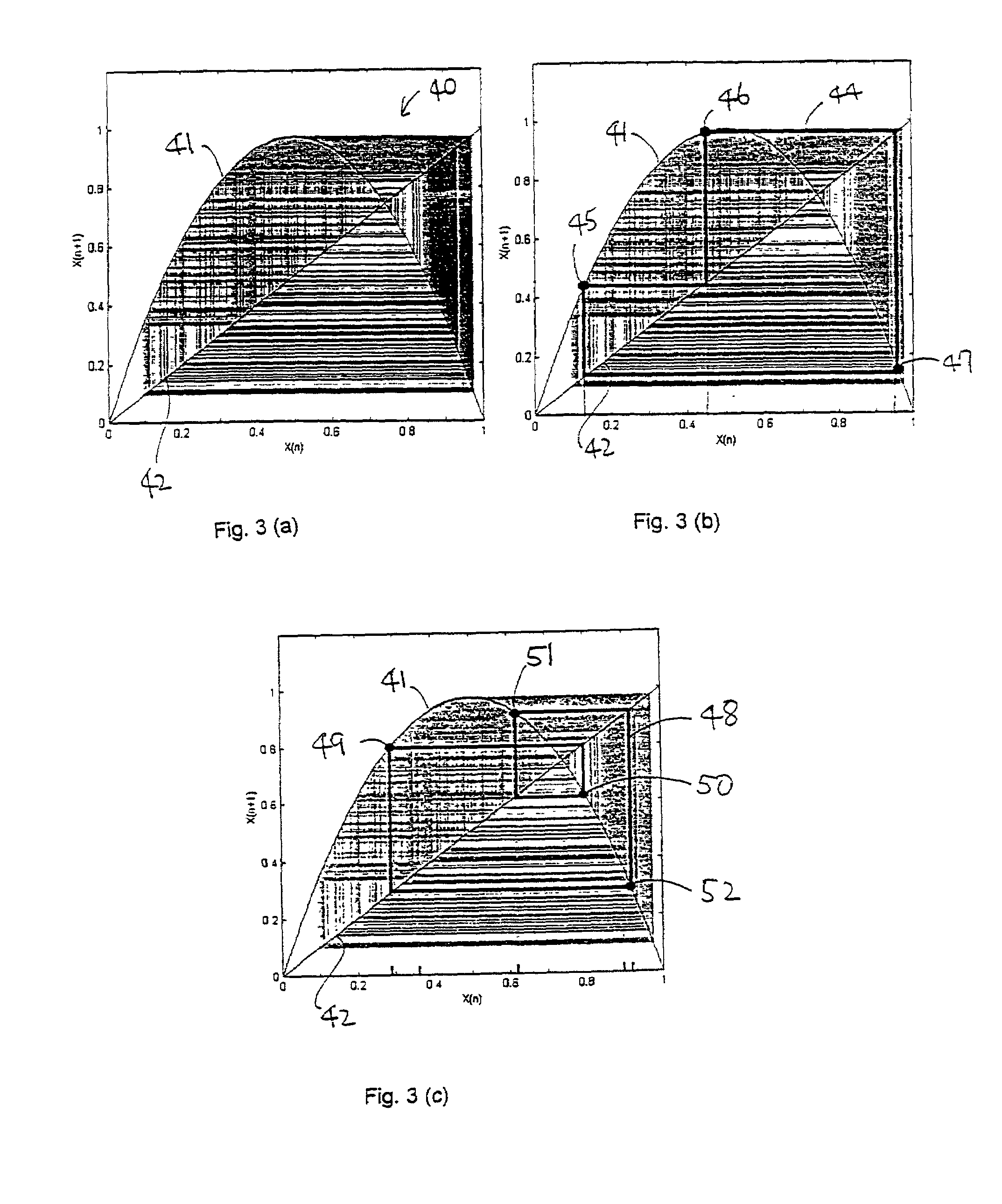Multiple access communication system using chaotic signals and method for generating and extracting chaotic signals
a multi-access communication and signal technology, applied in the field of multi-access communication systems using chaotic signals and methods for generating and extracting chaotic signals, can solve the problems of system limitation on the number of channels, the limitation of additional channels, and the limitation of the number of channels as in fdma systems
- Summary
- Abstract
- Description
- Claims
- Application Information
AI Technical Summary
Benefits of technology
Problems solved by technology
Method used
Image
Examples
Embodiment Construction
[0066]Referring to FIG. 1, an embodiment of a multiple access communication system 2 in accordance with the present invention is described. The communication system 2 comprises a chaotic signal generating unit 12 at a transmitting side 4, a chaotic signal receiving unit 14 at a receiving side 6, and a communication link 16 connecting the chaotic signal generating unit 12 and the chaotic signal receiving unit 14. The chaotic signal generating unit 12 receives data 30 from a plurality of users 18, 19 connected thereto, and generates a chaotic signal sequence 36 over the communication link 16. The chaotic signal receiving unit 14 receives the chaotic signal sequence 36 and extracts data 30 sent to users 20, 21 connected thereto, as described later. Only two users are shown in each transmitting side 4 and the receiving side 6 in FIG. 1 for simplicity of the drawing, but more than two users may be connected to each side of the communication system 2. FIG. 2 shows an embodiment of the cha...
PUM
 Login to View More
Login to View More Abstract
Description
Claims
Application Information
 Login to View More
Login to View More - R&D
- Intellectual Property
- Life Sciences
- Materials
- Tech Scout
- Unparalleled Data Quality
- Higher Quality Content
- 60% Fewer Hallucinations
Browse by: Latest US Patents, China's latest patents, Technical Efficacy Thesaurus, Application Domain, Technology Topic, Popular Technical Reports.
© 2025 PatSnap. All rights reserved.Legal|Privacy policy|Modern Slavery Act Transparency Statement|Sitemap|About US| Contact US: help@patsnap.com



